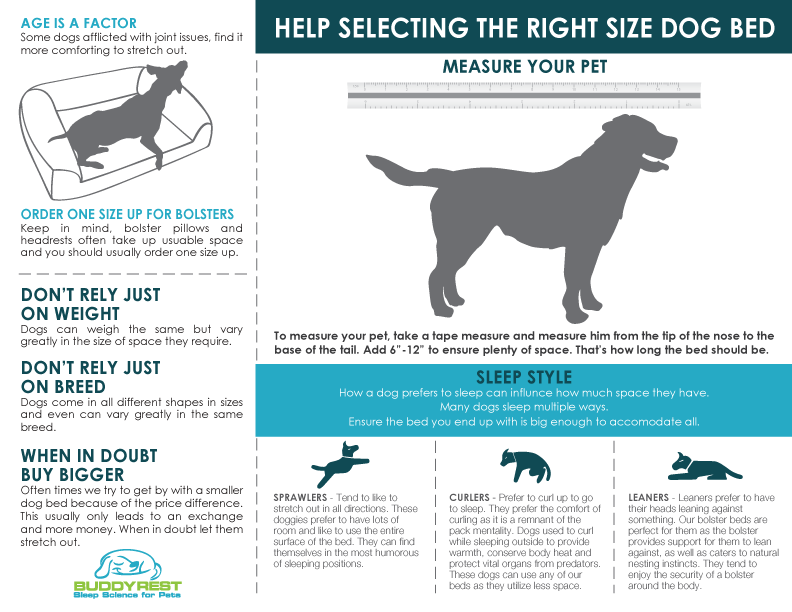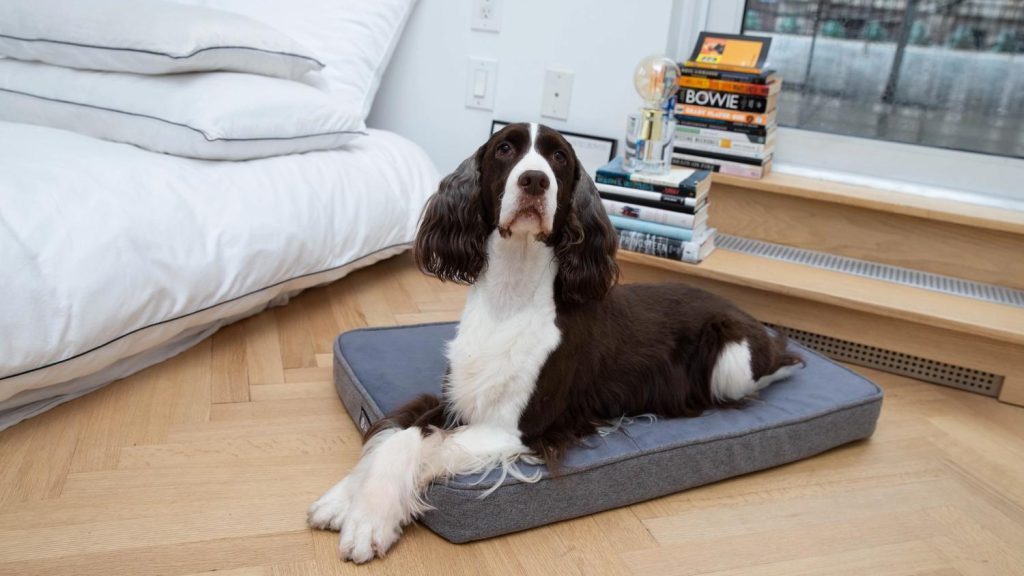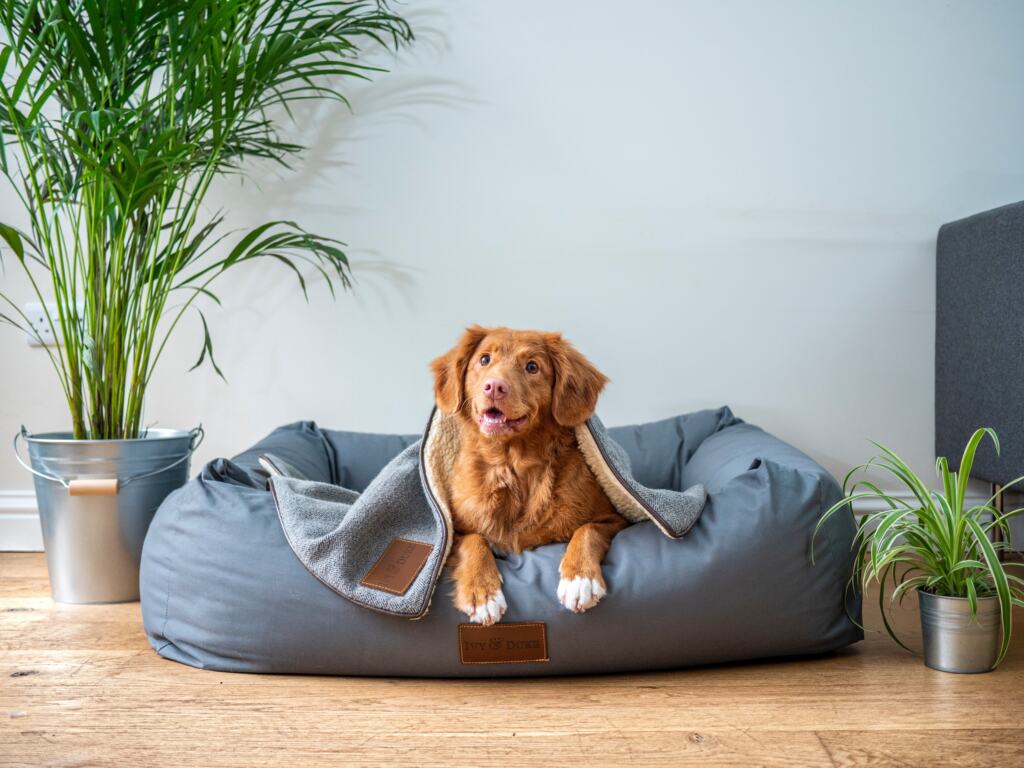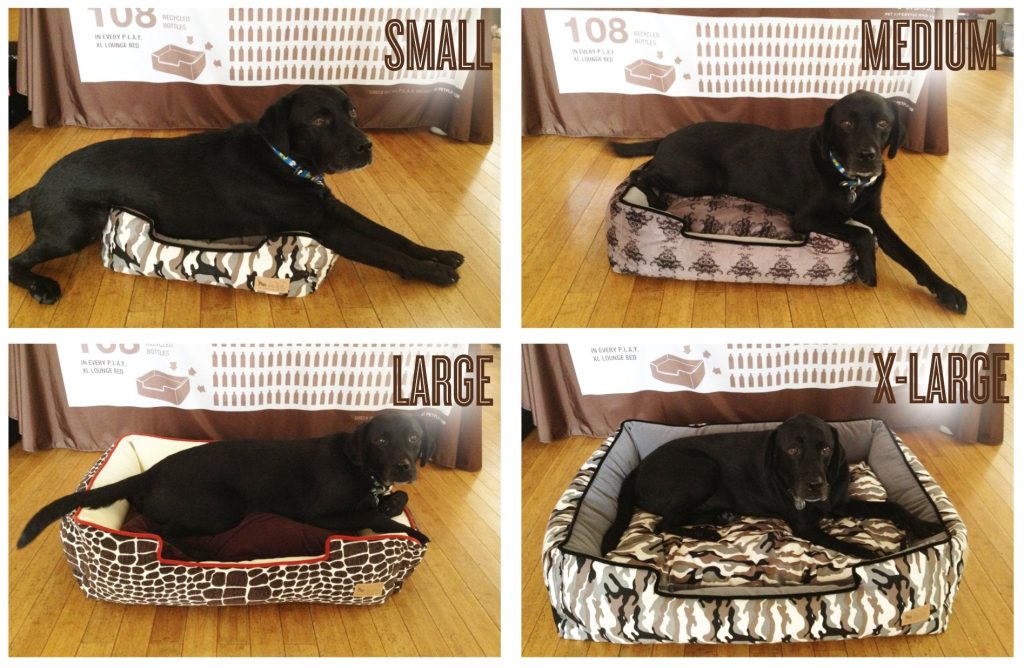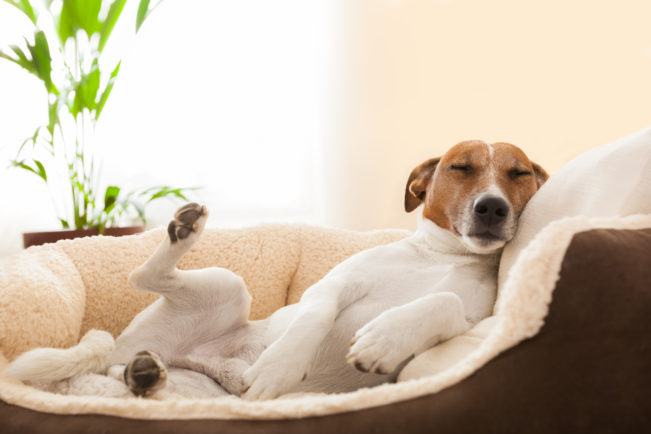As a loving pet owner, you want to ensure your furry friend is comfortable and well-rested. But when it comes to purchasing a bed for your dog, how often should you actually be doing it? We all know that dogs can be tough on their beds, whether it’s with their constant scratching, chewing, or simply wear and tear. In this article, we will explore the factors that determine the frequency of buying a bed for your dog, helping you make the best decision for your pet’s comfort and your wallet. From the size and age of your dog to their activity level, we will provide you with valuable insights to ensure your dog’s bed remains cozy and supportive for years to come.
Factors to Consider
When it comes to purchasing a bed for your furry friend, there are several factors to consider. Understanding these factors will help you make an informed decision and ensure that your dog has a comfortable and durable bed.
Size of the Dog
The size of your dog plays a significant role in determining how often you should buy them a bed. Larger dogs tend to put more weight and pressure on their beds, which can cause them to wear out more quickly. Smaller dogs, on the other hand, may not require as frequent bed replacements. It’s important to consider your dog’s size when determining the frequency of bed purchases.
Age and Activity Level
Another factor to consider is your dog’s age and activity level. Puppies and highly active dogs tend to be more playful and may exert more wear and tear on their beds. On the other hand, senior dogs or low activity dogs may not require as frequent bed replacements. It’s essential to evaluate your dog’s age and activity level to determine the appropriate frequency for bed purchases.
Health and Comfort Needs
If your dog has specific health or comfort needs, it may impact the frequency of bed purchases. For example, dogs with orthopedic needs may require a specialized bed that provides extra support for their joints. Dogs with allergies or sensitivities may need a bed with hypoallergenic materials. Additionally, if your dog has incontinence issues, you may need to consider purchasing a bed with waterproof or easily washable features. Taking into account your dog’s individual health and comfort needs will help you determine how often you should buy them a bed.
Quality and Durability of the Bed
The quality and durability of the bed are crucial factors when considering the frequency of purchases. A high-quality bed made of durable materials is likely to last longer than a cheaper, low-quality bed. Pay attention to the construction, materials used, and brand reputation when selecting a bed for your dog. Taking these factors into account will help ensure that you make a wise investment and reduce the need for frequent replacements.
Signs of a Worn-Out Bed
Knowing the signs of a worn-out bed is essential to determine when it’s time to purchase a new one. Keep an eye out for these indicators to ensure your dog’s bed remains in good condition.
Deformed Shape
One of the most obvious signs of a worn-out bed is a deformed shape. If the bed is no longer providing a level, supportive surface for your dog, it’s time to consider a replacement. Uneven padding and sagging areas are clear indications that the bed has lost its shape and is no longer providing adequate comfort.
Flat and Compressed Cushioning
If your dog’s bed has become flat and compressed over time, it may no longer offer the necessary support. Cushioning that fails to bounce back or remains permanently indented is a sign that the bed is worn out. Your dog may not be getting the comfort they need, which can lead to discomfort or joint issues.
Torn or Loose Fabric
Inspect the fabric on your dog’s bed regularly for signs of wear and tear. Torn or loose fabric can be hazardous and uncomfortable for your furry friend. It’s important to replace a bed with damaged fabric to prevent any potential injuries or discomfort.
Unpleasant Odors
An unpleasant odor emanating from your dog’s bed is a clear sign that it needs to be replaced. Odors can indicate bacteria or mold growth, which can be harmful to your dog’s health. Regular cleaning may help eliminate odors, but if they persist, it’s time to invest in a new bed.
Unresponsive Filling
If the filling inside your dog’s bed no longer provides cushioning or support, it’s a strong indication that the bed is worn out. Insufficient padding can lead to discomfort for your dog and may even exacerbate existing joint issues. A bed with unresponsive filling should be promptly replaced.
Frequency Based on Dog’s Size
The size of your dog plays a significant role in determining how often you should purchase a new bed. Here’s a breakdown of the recommended frequency based on different dog sizes:
Small Dog Breeds
Small dog breeds, such as Chihuahuas or Pugs, typically require a new bed every 1-2 years. Their lighter weight and smaller size can help prolong the life of the bed, but regular replacements are still necessary.
Medium-Sized Dog Breeds
Medium-sized dog breeds, like Cockapoos or Beagles, usually require a new bed every 2-3 years. These dogs fall in the middle range in terms of both weight and size, so their beds may last slightly longer but still require regular replacements.
Large Dog Breeds
Large dog breeds, such as Labradors or Boxers, generally need a new bed every 2-4 years. The extra weight and pressure that larger dogs exert on their beds can cause them to wear out more quickly.
Giant Dog Breeds
Giant dog breeds, like Great Danes or Saint Bernards, may require a new bed more frequently, often every 1-2 years. Their considerable size and weight can put significant strain on their beds, leading to quicker wear and tear.
Frequency Based on Dog’s Age
The age of your dog also influences the frequency of bed purchases. Here’s a breakdown of the recommended frequency based on different dog ages:
Puppies
Puppies are usually more active and playful, which can lead to a faster deterioration of their beds. As puppies grow and go through their development stages, it’s common to replace their bed every 6-12 months.
Adult Dogs
Adult dogs, who have settled into a routine and tend to be less active than puppies, typically require a new bed every 2-3 years. However, factors such as size, health, and the overall condition of the bed should also be considered when determining the frequency of replacements.
Senior Dogs
Senior dogs, who may have age-related joint issues or medical conditions, may benefit from more frequent bed replacements. Providing them with a comfortable and supportive bed is crucial for their well-being. Consider replacing their bed every 1-2 years to ensure they have the best possible sleep surface.
Frequency Based on Dog’s Activity Level
The activity level of your dog is another critical factor to consider when determining the frequency of bed purchases. Here’s a breakdown based on different activity levels:
Highly Active Dogs
Highly active dogs, such as Border Collies or Australian Shepherds, require more durable beds due to their increased energy and playfulness. These dogs may benefit from a new bed every 1-2 years to ensure they have a comfortable and supportive surface to rest.
Moderately Active Dogs
Moderately active dogs, like Bulldogs or Basset Hounds, typically require a new bed every 2-3 years. The frequency may vary depending on the size, age, and overall wear and tear on the bed.
Low Activity Dogs
Low activity dogs, such as Bulldogs or older dogs, may not require as frequent bed replacements. Their less active lifestyle puts less strain on the bed, allowing it to last longer. Consider replacing their bed every 3-5 years, but also evaluate the bed’s condition and comfort level.
Health-Related Considerations
Certain health-related factors may impact the frequency of bed purchases for your dog. Here are a few health considerations to keep in mind:
Orthopedic Needs
Dogs with orthopedic needs, such as arthritis or joint issues, may require specialized beds that offer extra support and comfort. Orthopedic beds help alleviate pressure points and provide relief for dogs with mobility issues. If your dog requires an orthopedic bed, replacing it every 1-2 years may be necessary to ensure their comfort and overall well-being.
Allergies or Sensitivities
If your dog has allergies or sensitivities, it’s crucial to choose a bed with hypoallergenic materials. These beds are designed to minimize allergens and eliminate potential irritants. Regular replacement, every 1-2 years, may be necessary to maintain a hypoallergenic environment for your dog.
Incontinence Issues
Dogs with incontinence issues may require a bed with waterproof or easily washable features. Bedding frequently soiled due to accidents should be replaced as needed to maintain cleanliness and prevent odors. Consider investing in a new bed every 1-2 years to ensure your dog’s comfort and hygiene.
Bed Quality and Durability
The quality and durability of a dog bed are crucial factors when determining how often it should be replaced. Here are a few aspects to consider when evaluating a bed’s quality:
Material and Construction
Ensure the bed is made from high-quality materials that are both comfortable and durable. Beds made from memory foam, for example, offer excellent support and cushioning. Additionally, check for sturdy construction and reinforced seams to prevent premature wear and tear.
Brand Reputation
Consider purchasing a bed from a reputable brand known for producing high-quality pet products. Brands with a good reputation often prioritize durability and customer satisfaction.
User Reviews
Reading user reviews can provide valuable insights into the quality and longevity of a bed. Look for positive reviews that highlight the bed’s durability and comfort. It’s always beneficial to learn from the experiences of other dog owners.
Tips for Choosing a Durable Bed
Choosing a durable bed is essential to minimize the frequency of replacements. Here are a few tips to help you select a bed that can withstand the test of time:
Select a Suitable Size
Choose a bed that is the appropriate size for your dog. Beds that are too small not only lack comfort but may wear out more quickly due to increased pressure. On the other hand, oversized beds may lose their shape faster. Selecting the right size ensures optimal comfort and helps prolong the bed’s lifespan.
Choose High-Quality Materials
Opt for beds made from high-quality materials such as memory foam, durable fabrics, and hypoallergenic fillings. These materials are more likely to withstand daily wear, frequent washing, and your dog’s habits.
Consider Washability
Look for beds with easily washable covers or those that can be fully machine washed. Regular cleaning helps maintain the bed’s hygiene and overall freshness. Beds with removable covers make cleaning more convenient.
Look for Non-Slip Features
If your dog tends to move around a lot during sleep, look for beds with non-slip features or non-skid bottoms. These prevent the bed from sliding around, ensuring it remains in place and undamaged.
Opt for Reinforced Seams and Stitching
Beds with reinforced seams and stitching are less likely to succumb to wear and tear. Dogs may chew or scratch their beds, so opting for a bed with sturdy construction can significantly extend its lifespan.
Maintenance and Care
Proper maintenance and care can help prolong the life of your dog’s bed and reduce the need for frequent replacements. Here are a few tips to keep in mind:
Regular Cleaning
Regularly clean your dog’s bed to maintain its hygiene and freshness. Remove and wash the cover as per the manufacturer’s instructions. Vacuum the bed to remove any loose hair or debris. If your dog has accidents on the bed, clean it promptly and thoroughly to prevent odors and bacteria buildup.
Replacement of Components
Some beds may allow for the replacement of specific components. If your dog’s bed has replaceable covers or inserts, take advantage of this feature. Replacing worn-out covers or flattened inserts can significantly extend the overall lifespan of the bed.
Using Protective Covers
Consider using a protective cover or liner on your dog’s bed to provide an extra layer of defense against accidents, spills, and general wear and tear. Protective covers can be easily removed and washed, helping to keep the bed clean and fresh for longer.
Budget Considerations
Balancing cost and quality is an important aspect when it comes to purchasing a bed for your dog. While higher-quality beds may come with a higher price tag, they often offer greater durability and comfort, ultimately saving you money in the long run. Consider the following factors when evaluating the budget for your dog’s bed:
Balancing Cost and Quality
Strive for a balance between cost and quality when selecting a bed. While it can be tempting to opt for a cheaper option, keep in mind that it may not last as long or provide the necessary comfort and support for your dog. Investing in a higher-quality bed may initially cost more but can save you money on frequent replacements.
Evaluating Long-term Costs
When considering the cost of a dog bed, think about the long-term costs associated with the bed’s lifespan. A more durable and long-lasting bed may require less frequent replacements, which can lead to overall savings. Evaluating the long-term costs can help you make a wise investment and ensure your dog’s comfort and well-being.
In conclusion, several factors should be taken into account when determining the frequency of purchasing a bed for your dog. Consider your dog’s size, age, activity level, health and comfort needs, as well as the quality and durability of the bed. Regularly assess the condition of the bed for signs of wear and tear. By making informed decisions and choosing a bed that meets your dog’s specific requirements, you can provide them with a comfortable and durable resting place that promotes their overall well-being.


